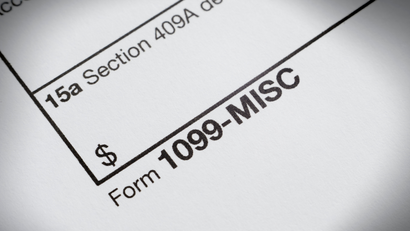As a parent, you want to provide the best possible life for your children. However, raising children can be expensive, and knowing what financial help is available is essential. One option for parents in the United States is Child Tax Credit for the 2023 tax year.
What Are Child Tax Credits?
Child Tax Credits are payments made to parents with children under 17. The credit offsets the cost of raising a child and can significantly boost a family’s finances. The amount of credit varies depending on the number of children in the family and the parent’s income.
How Much Are Child Tax Credits?
For the tax year 2023, the maximum Child Tax Credit is $3,600 per child under the age of 6 and $3,000 per child between the ages of 6 and 17. They reduced the credit for families with higher incomes. For example, they reduce the credit by $50 for every $1,000 of income above $150,000 for married couples filing jointly or $75,000 for single filers.
Who Is Eligible for Child Tax Credits?
You might qualify for Child Tax Credit for the 2023 tax year if the following apply:
- You have a child who is under the age of 17 at the end of the tax year.
- The child must be a U.S. citizen, a U.S. national, or a resident alien.
- The child has lived with you for over half of the tax year.
- You must have provided more than half of the child’s financial support during the tax year.
- Your income must be under a specific threshold.
- You must file a tax return, regardless of whether you owe any taxes.
How to Claim Child Tax Credits?
To claim Child Tax Credits, you need to complete a tax return. You can declare the credit on Form 1040, Form 1040-SR, or Form 1040-NR. In addition, you’ll need to provide the Social Security number of each qualifying child and complete the Child Tax Credit Worksheet.
What Are the Changes to Child Tax Credit for 2023?
In 2021, the Child Tax Credit underwent significant changes due to the American Rescue Plan Act. The Act increased the credit amount and expanded the eligibility criteria. The changes include:
- They increased the maximum credit amount to $3,600 for children under the age of 6 and $3,000 for children between the ages of 6 and 17.
- The credit is now fully refundable, meaning you can receive a refund even if you don’t owe any taxes.
- They increased the income threshold for eligibility to $75,000 for single filers, $112,500 for heads of households, and $150,000 for married couples filing jointly.
- The credit is now available to families with children aged 17 and under instead of just children under 17.
- It will pay the credit out in advance, with monthly payments starting in July 2021.
Child Tax Credits vs. Childcare Expenses
It’s important to note that Child Tax Credits differ from Child and Dependent Care credits. While Child Tax Credits provide financial help for raising a child, the Child and Dependent Care Credits help parents cover the cost of childcare while they work. You can claim for children under 13 and other dependents who cannot care for themselves. The cost of childcare and the parent’s income determines the amount of the credit. Parents can claim the Child Tax Credit and the Child and Dependent Care Credit if they meet the eligibility criteria.
Child Tax Credits for Non-Custodial Parents
Non-custodial parents may also be eligible for Child Tax Credits if they meet the eligibility criteria. For example, suppose the non-custodial parent provides more than half of the child’s financial support during the tax year. In that case, they can claim the credit on their tax return.
However, the custodial parent must provide written permission for the non-custodial parent to claim the credit.
Non-custodial parents need to discuss this with the custodial parent and agree on claiming the credit. For example, suppose both parents claim the credit for the same child. In that case, the IRS will investigate who can claim the credit.
Child Tax Credits for Military Families
Military families may face unique challenges when claiming Child Tax Credits. For example, suppose they deploy a military parent. In that case, they may only meet the residency requirement for the child to have lived with them for half of the tax year.
However, the IRS recognizes military parents may not have a choice in their deployment and provides special rules for these situations. Military parents deployed outside of the U.S. can still claim the credit if the child is living with a non-deployed parent or another caregiver who is not a parent. However, the deployed parent must provide more than half of the child’s financial support during the tax year.
Child Tax Credits for Adopted Children
Adoptive parents may also be eligible for Child Tax Credits for their adopted children. The adoption must be final to claim the tax credit, and the child must have a Social Security number. The child must also be a U.S. citizen, U.S. national, or resident alien.
Suppose the adoption process still needs to be finalized. In that case, the adoptive parent can still qualify for the credit by meeting specific criteria, such as having the child reside with them for more than half of the tax year and anticipating the finalization of the adoption.
Child Tax Credits for Foster Children
Foster parents may also be eligible for Child Tax Credits for their foster children. However, there are some specific rules for claiming credit for foster children. The child must have lived with the foster parent for the entire tax year to be eligible. The foster parent must provide more than half of the child’s financial support during the tax year.
The foster parent can claim the credit on their tax return, even if they are not the child’s legal guardian or adoptive parent. However, suppose the child is eligible for the credit under more than one taxpayer’s return. In that case, only one taxpayer can claim the credit.
Receiving Child Tax Credits
Parents can receive their Child Tax Credits in a few different ways. First, you can claim the credit as refundable on your tax return. Alternatively, parents can receive the credit in advance payments starting in July 2021. After that, the IRS will send monthly fees of up to $300 per child for children under the age of 6 and up to $250 per child for children between the ages of 6 and 17.
The advance payments for Child Tax Credits will rely on the information provided on your 2020 tax return. Parents can decline the advance payments if they prefer to claim the entire credit on their tax return or if their income has increased, making them ineligible.
Additional Tax Benefits for Parents
Besides Child Tax Credits, several other tax benefits are available to parents, such as the Earned Income Tax Credit (EITC), which helps low- and moderate-income families with children. The credit amount varies based on income and the number of children in the household.
There is also help through the American Opportunity Tax Credit (AOTC) provides financial help to parents paying for their child’s college education. You can claim the credit for up to $2,500 per year for each eligible student and up to four years.
Parents who adopt children may also be eligible for the Adoption Tax Credit. You can claim the credit for up to $14,440 per child in the tax year 2021. It can cover adoption fees, legal fees, and other adoption-related expenses.




